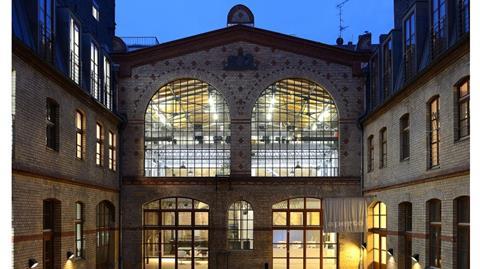Deal flow has returned to most European office markets, but is heavily focused towards the core end of the risk spectrum, according to new research from UBS.

The firm's latest survey of European offices concludes that pricing in this segment of the market appears to be holding up, but discounts are expected as assets move up the risk curve.
Historically low leverage levels should help prevent forced sales, UBS notes. But rising costs of new lending may stifle a recovery in activity and place outward pressure on yields.
Contrasting fortunes
While the final quarter of 2019 saw European office transactions reach a record high, surpassing the previous record by a stand-out 30%, the market is in quite a different place six months on. While the research concludes that second quarter deals will 'inevitably fall significantly', over the past two months, an increasing number of assets have been brought forward for sale.
'The types of assets which are coming forward are generally those where the vendor has a good indication that they can achieve a price which is not far off pre Covid-19 levels. So most of the assets coming to market are in the core locations, with a good length of income to robust tenants, both factors of which largely reflect investors’ appetite for risk at the moment i.e. not much at all,' notes the report.
While for 'very core, secure income assets pricing has barely moved since before Covid-19' - not least due to the weight of capital pursuing these properties - the report suggests that matters are more opaque moving up the risk curve. 'Buyers typically want some form of discount, but vendors are in no rush to sell. And once we move into the true value-add space, there is even less transactional evidence to indicate a movement in pricing,' the report says.
Lack of distress
While there is volatility outside core, for now there is a lack of real distress in the market, according to the report. 'Forced sales have not yet become a feature of this crisis, which will be a key component of pricing staying relatively stable in the coming quarters,' it concludes.
Meanwhile, in terms of territorial differences, Germany seems to be speeding ahead towards recovery, after being less affected by the pandemic and coming from a stronger base of demand. Despite this, there is one shadow on the German market.
'Perhaps surprisingly, the debt market does appear to be pricing in some significant increase in risks to the German market, even as equity investors pile ahead. Even for core German offices, lending rates have doubled since Covid-19, and LTVs have moved in from around 65% to a new normal of 55%,' the report says.
While cash-rich buyers are still in the clear, it may impact how sustainable levels of deal activity are in the medium term.
Overall, the report suggests that a clear picture of European office markets may not emerge until the end of the year, but core assets should hold their value reasonably well. However, rising costs of debt could yet interfere with recovery, and accelerating structural shifts towards home-working and other consolidation trends may give investors reason to pause.










